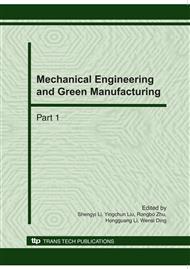p.1601
p.1605
p.1609
p.1614
p.1620
p.1625
p.1630
p.1635
p.1640
The Granulation Technique of Rice Straw and its Mechanical Equipment Design
Abstract:
As a large agricultural country, rice straw is a kind of inexhaustible and renewable resources in China. Since the rice straw is viscoelastic biological material with low density, it is not conducive to the transport and storage, and it affects the deep processing or secondary development and utilization. Due to the high compression ratio, on the other hand, straw densification briquetteing fuel (SDBF) is great convenience to transport and storage. Simultaneously, it improves the combustion properties of biomass fuels, and increases the efficiency in the use of biomass resources. It has an expansively developing prospects. Accordingly, how to effectively convert the loose rice straw into SDBF is gaining more and more attentions now. In this article, by researching the characteristics of the compressed rice straw fiber, biomass formation mechanism and its influence on shaping factors, the better conditions in processing of rice straw compression molding are concluded. Based on biomass compression molding technology, a kind of flat compression granulating machine was subsequently designed. And then we have designed compressed granulation molding trials on straw with different particle size and different pressures. Experimental results show that the granulation machinery can effectively reduce energy consumption, abrasion of equipment, and raise the productivity.
Info:
Periodical:
Pages:
1620-1624
Citation:
Online since:
October 2010
Authors:
Keywords:
Price:
Сopyright:
© 2010 Trans Tech Publications Ltd. All Rights Reserved
Share:
Citation:


